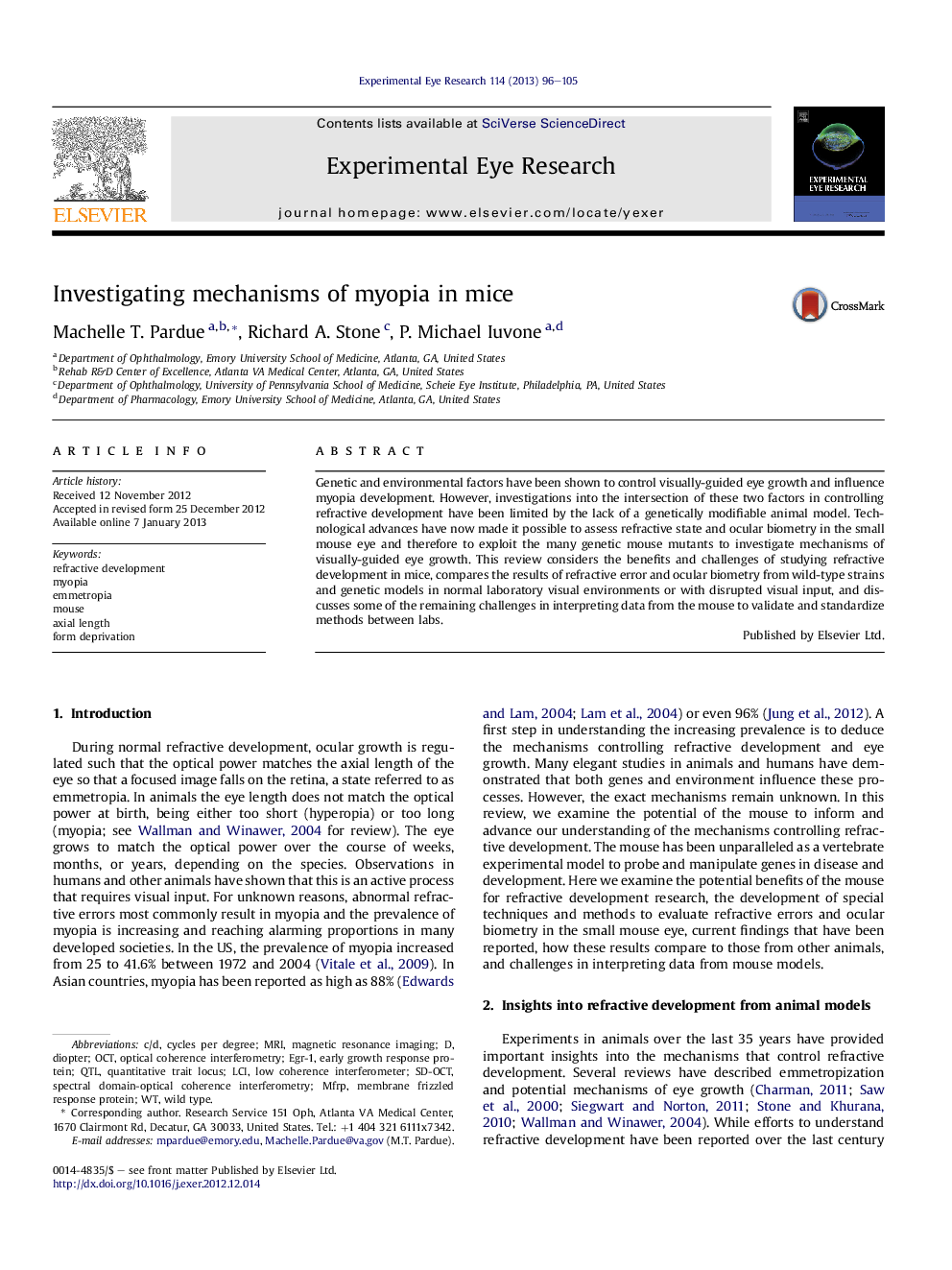| Article ID | Journal | Published Year | Pages | File Type |
|---|---|---|---|---|
| 6197179 | Experimental Eye Research | 2013 | 10 Pages |
Genetic and environmental factors have been shown to control visually-guided eye growth and influence myopia development. However, investigations into the intersection of these two factors in controlling refractive development have been limited by the lack of a genetically modifiable animal model. Technological advances have now made it possible to assess refractive state and ocular biometry in the small mouse eye and therefore to exploit the many genetic mouse mutants to investigate mechanisms of visually-guided eye growth. This review considers the benefits and challenges of studying refractive development in mice, compares the results of refractive error and ocular biometry from wild-type strains and genetic models in normal laboratory visual environments or with disrupted visual input, and discusses some of the remaining challenges in interpreting data from the mouse to validate and standardize methods between labs.
⺠Mice have advantages and challenges for elucidating mechanisms of refractive development. ⺠Studying refractive development in mice requires special equipment and methods. ⺠The influence of genetic/environmental factors on myopia can be studied in mice.
